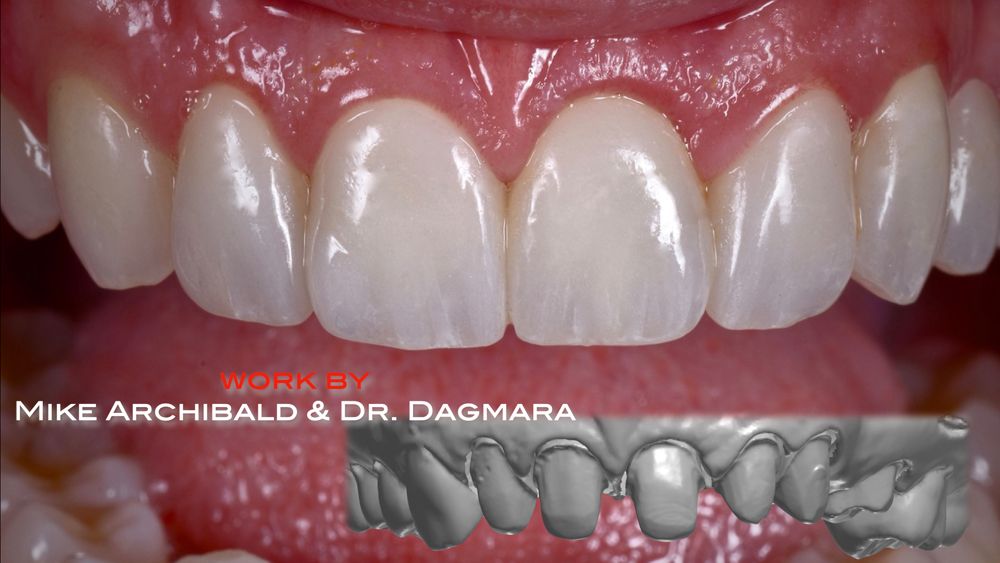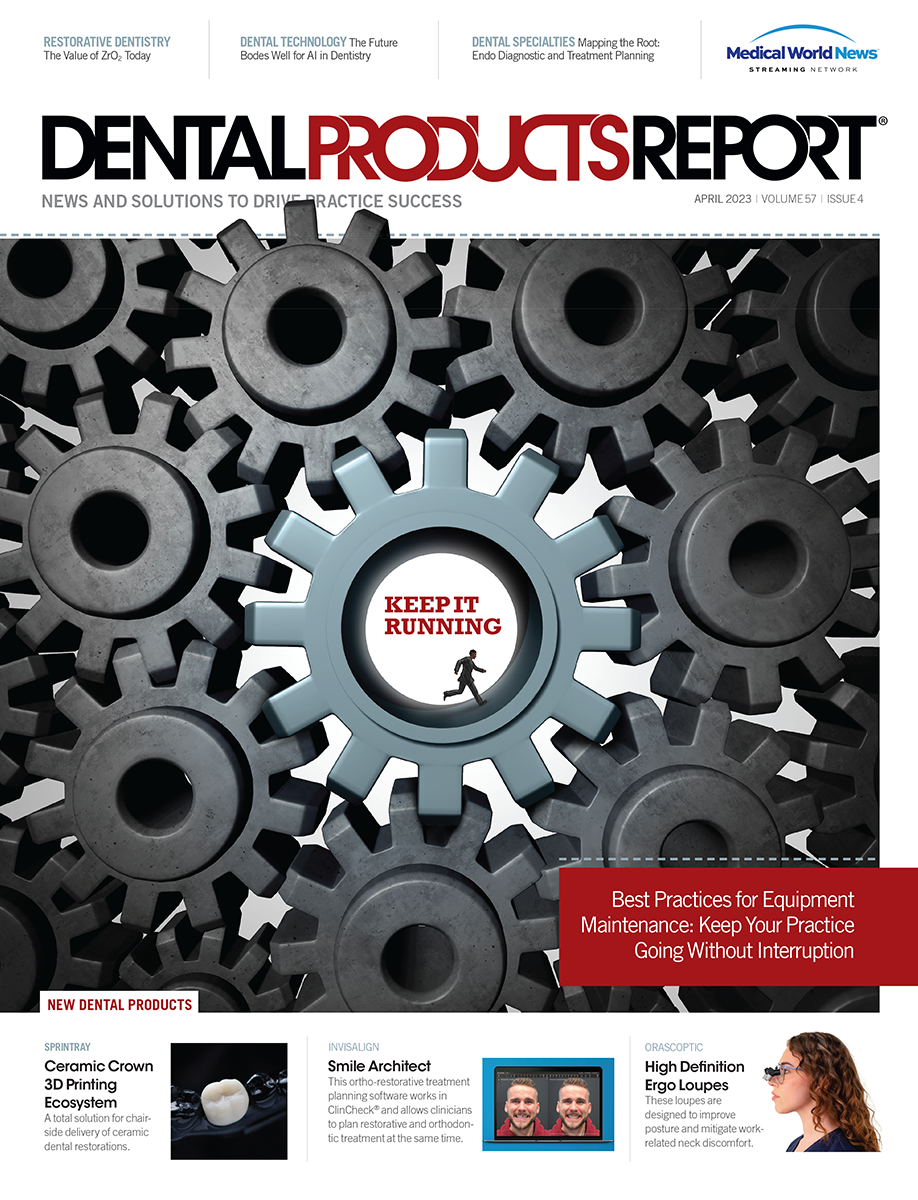The Value of ZrO2 Today: Material Composition and Light Performance
A new product line of multicomposition zirconium dioxide for the dental industry is well on its way.

In today’s environment of new information, materials, and techniques, it is easy to feel completely overwhelmed and lost. I personally love the constant innovation and the challenge that comes with adapting. I want to share with you the principle of light performance and how it can help you understand what your dental material will need to have a successful delivery.
We are moving into a world of more complex composition in zirconium dioxide (ZrO2), and it requires us to advance our understanding. I get asked these questions many times: Why do you use IPS e.max ZirCAD Prime? Are you getting paid to use IPS e.max ZirCAD Prime? Have you tried a different product? My answer regarding this Ivoclar material is always that I try my best to investigate everything, and if I find something I like more than IPS e.max ZirCAD Prime, I will use it.
From White Zirconia to Multicolored and Multitranslucent Materials
We have moved far from the old pure white 3Y-TZP zirconia frameworks to multicolored and multivalue (multitranslucent) zirconia. And with all the new zirconias hitting the market comes an assault of marketing names, which unfortunately just makes things worse. The greatest example and ultimate plague of our industry is the label multilayer and how it was used for multicolor ZrO2. Looking at Figure 1, you can see 3 examples to help explain this. For those who are not familiar with the term value, we often use it as another term for translucency.
The sample on the left is what most companies will call multilayer, referring to layers of color/chroma, but it is 1 single composition of ZrO2 type. This sample is probably the most used in the United States, and it doesn’t look bad on the bench. However, in terms of light performance, this is just different colors of dentine value material (all 4Y), giving you 1 single value (or 1 single type) of light performance.
The sample in the middle has layers of color and actual layer types of ZrO2. It has a base of dentine value (4Y-TZP) and enamel value (5Y-TZP), with a mixed layer between them. Brands will range from 2 to 4 different stacked layers. Even though the sample in the middle has better light performance vs the sample on the left, the stacked layers of ZrO2 type does have some struggles. There will be some minimal coefficient thermal expansion (CTE) changes in the layers, telling us that large bridges and layering porcelain is less stable. The stacked layers are not visible in real life, and we know from our history with the IPS e.max ZirCAD MT Multi that this type of ZrO2 composition is a major esthetic improvement vs any multicolor 4Y-TZP, as it has better light performance in the mouth.
The third sample is the IPS e.max ZirCAD Prime Esthetic, which features layers of color and a true gradient/blending of ZrO2 powders. The IPS e.max ZirCAD Prime Esthetic has a base of dentine value (4Y-TZP) that seamlessly blends into the enamel value (5Y-TZP), using the unique gradient technology. The Prime Esthetic is therefore the next generation of compositions that, in addition to seamless blending, also offers a gradual CTE gradient that allows us to use the material in a wider variety of techniques. Additionally, the IPS e.max ZirCAD Prime, the big brother of the Prime Esthetic, is a 3Y-TZP base with gradient technology up to 5Y-TZP, providing a stronger option for more intense large cases.
Why Is It More Challenging to Visualize the Value?
There are new compositions in the lab. In Figure 2, I have taken the IPS e.max ZirCAD Prime Esthetic and popular types of multicolor and simply stained and glazed to an A2 shade without making them look better or worse. I tried to be realistic and fair on what is done in most labs I have seen. On the bench, they all look fairly similar—aside from interproximal contacts.
Figure 3 tells you how much a multicomposition material will help in natural light performance. You can use stains and techniques to help give the illusion of translucent effects, but stain is actually opaque. It may have some glaze mixed in to make it appear more translucent, but it’s still opaque and is suspended in a very microspace, so the more you cake on, the less translucent your crown gets. I know MiYO is a great technique but this is still working with illusion and is not real translucency. Fake translucency is only a substitute in the absence of real translucency.
Looking at Figures 4 and 5, which feature bridges fabricated with regular Prime on top and multicolor 4Y on the bottom, you can see how hard it is to visualize the benefit from the bench; they look almost identical to the eye.
The IPS e.max ZirCAD Prime is a 3Y-TZP to 5Y-TZP blend (opaque dentine to enamel), and the Prime Esthetic has a much more realistic light performance. Some fall for the trap of the softer general appearance of all 4Y-TZP on the larger bridges, but that is just not natural. Also notice how light sees stains as opaque.
Let’s Look at Nature, the Ultimate Teacher!
A map of what value types you may find in real teeth is shown in Figure 6, as well as the values of ceramic you need to have if you wish to try to mimic nature. From this example, you can easily see why there is an average of 7 to 12 different values of porcelain in any system sold. No ceramist would layer a tooth with different colors of just dentine, as they would instantly lose their job. Willi Geller, one of the best ceramists, is known for saying, “Color is easy but value is hard.”
If you are a fantastic ceramist, you may think you don’t need fancy core materials because they will just get covered up, but I strongly urge you to change your mind-set. With a better core material that seamlessly goes from dentin to enamel, you can microlayer and dramatically increase your productivity without giving up your art (Figure 7). The time it takes to teach and make more ceramists is dramatically reduced. You can work smarter with smart materials without losing what makes you great.
Value Is the Most Important Factor in Case Success
Have you ever had a crown look perfect in the chair, then get the call from a patient who says, “Hi. When I look in the mirror, my crown looks weird,” or “When I was with my friends, they could see my crown didn’t match.” We have all experienced this when we don’t mimic the light performance of the natural teeth next to our crown. This is why you would not layer with all dentine porcelain and why a clinician would not use only 1 resin composite on a class IV filling.
A Common Story From a Personal Experience
I enjoy helping others get access to the best tool, materials, and handling; however, when I travel for courses or research and development projects, it would sometimes throw a wrench into others’ schedules. Sometimes they need to outsource somewhere else, and the comment every single time is consistent: “My doctor called me after a seating and said they noticed a change for the worse. I have to go back to using what I was using before.” This means the doctors became accustomed to the light performance of a multivalue ZrO2 and noticed a dramatic change when reverting to a multicolor 4Y-TZP crown.
There may be a question of why the ZirCAD Prime and Prime Esthetic aren’t being offered more if they are such great products, but this is usually because a milling center will not use a multivalue because of the cost, or they might not have the knowledge to use it correctly.
With more advanced materials, we must be more advanced in our handling. We need to make sure nesting (positioning) is handled perfectly for milling and remember that each type of ZrO2 is different in the way it reacts to sintering processes.
In Figure 8, the misfired sample on the left is the result of going
2 °C too fast in the wrong part of the sintering cycle—just 2 °C! Little missteps in sintering can have very negative results. But if it’s handled correctly with just a little care, the payoff is huge.
My brother Mike Archibald, CDT, has done incredible cases with ZirCAD Prime and the Prime Esthetic over the years, and I know this because I do the design and milling for him. Our relationship is one where a box of cases will show up with a note that says, “Just do what is best.” He has allowed me to help dial in sinter programs and infiltration techniques by giving me a second opinion without knowing exactly what I did. He has 2 perfect examples of light performance I want to share.
First Case
This is a full mouth rehabilitation that included a combination of minimal preps, full preps, and bridges—the kind of case we all have to do (Figures 9a-9b). For this procedure, the IPS e.max ZirCAD Prime was used in shade BL2 to keep the value a little higher, and it was fired with the Programat S1 (Ivoclar) on the MT S1 1600/S2 1600 program. Note: For more information on this program, visit archibalddigital.com.
My brother and Dagmara Sieron, DDS, did everything they could to deliver a fantastic result. As you can see, there is a whole lecture on planning, preparation, artistry, and delivery with this case. But in terms of light performance, the change in value from cervical to incisal keeps even a bright bleach shade from looking fake.
If we had used any form of single composition, this case could have looked like every hockey puck you see on billboards today. This is all fantastic work by Mike Archibald and Dr Sieron at the West Lafayette Dental Studio.
Second Case
For the second patient, the IPS e.max ZirCAD Prime Esthetic A1 shade was used and fired on the multitranslucency program. Here, you can see a beautiful match to natural teeth (Figure 10). When Mike Archibald showed me a picture, I couldn’t believe it was the same case I designed. No matter how good my designs, materials, and custom programs may be, it still takes a trained and talented person to make it look like this. When you work on a whole mouth, you have the leeway and freedom to make your own rules of light performance, but when you are seating crowns next to real teeth in the anterior region, light performance must be respected. If you place a single composition material next to a real tooth in the anterior, it will look good from only 1 angle—if you’re lucky.
All in all, we are in a new phase of advanced composition ZrO2s, and it’s going to be fun to watch marketing teams come up with names, as we are just starting a whole new product line of multicomposition ZrO2s.
Anyone who knows me knows my doors are open for you to send a case and see whether something can be improved in your handling or workflow. You can also order an IPS e.max ZirCAD Prime Esthetic raw shade guide as an ultimate control tool. I don’t try to hoard or hide information from anyone. No matter who you are—whether you’re a dentist, ceramist, designer, miller, or painter—if you improve your foundation, everything you do after will benefit.
